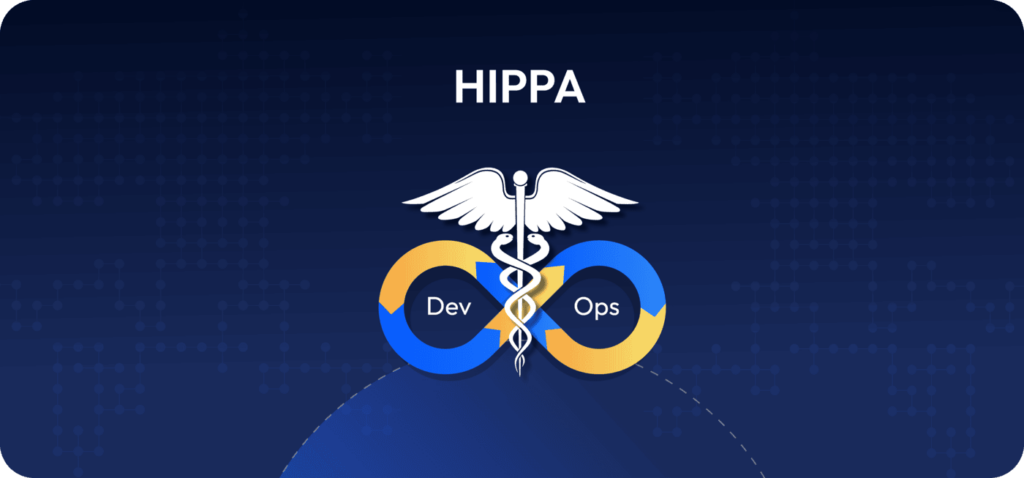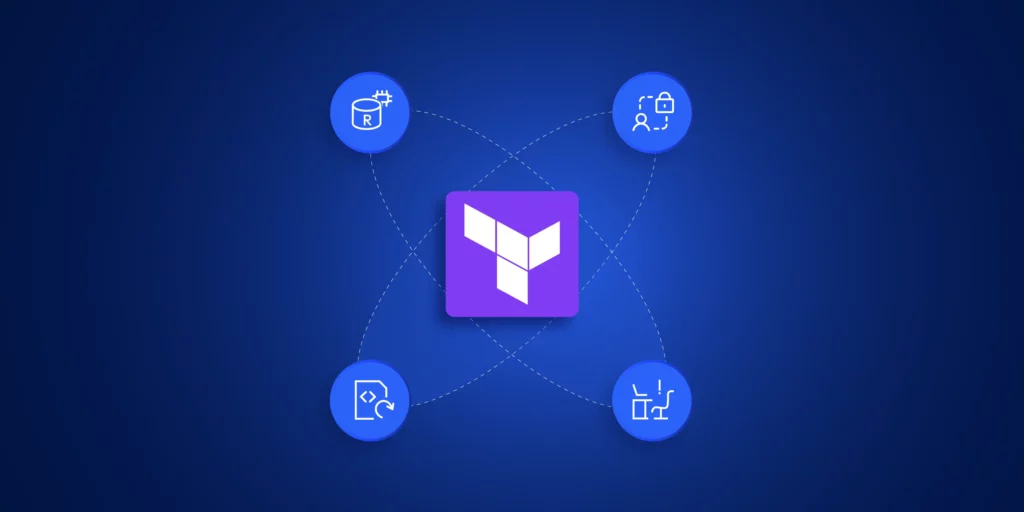Modern healthcare service provision is supported by cloud-based software and digital infrastructure. Sensitive patient health information (PHI) is shared between organizations. These organizations must follow the rules of the Health Insurance Portability and Accountability Act (HIPAA). This act is meant to protect how PHI is accessed and used. Strong DevOps practices, good cloud governance, and using IaC tools like Terraform are key for successful HIPAA compliance. Getting HIPAA compliance right is very important for start-ups. Getting DevOps and tool deployment right from the start helps the business succeed in the long run.
How to Design DevOps for HIPAA Compliance
HIPAA principles touch many aspects of software development and infrastructure provision. DevOps, as the glue uniting software development and IT Ops, is therefore pivotal to compliance. It starts with strong cloud governance. If you are looking to ensure your infrastructure is HIPAA compliant, read on to ensure you’re aligned.
Cloud Governance for DevOps HIPAA Compliance
Organizations regulated by HIPAA must ensure that their cloud environment is compliant and stays that way by:
- Using a HIPAA-compliant cloud service
Make sure your Cloud Service Provider (CSP) follows HIPAA standards for managing ePHI. Also, ensure you have a Business Associate Agreement (BAA) that explains the shared duties for protecting ePHI. AWS, Azure and Google Cloud Platform (GCP) all have HIPAA-compliant options, it’s a case of choosing the platform that suits you best. - Designing and implementing a robust cloud governance framework This should feature defined policies, procedures, and technologies to meet HIPAA standards for data encryption, access, monitoring, incident response, and audits.
- Utilizing Infrastructure as Code tools to automate HIPAA-compliance infrastructure provision – Using Infrastructure as Code (IaC) tools like Terraform allows DevOps to provision consistent, HIPAA-compliant AWS infrastructure, making it easier to secure and maintain.
- Identifying and eliminating cloud drift – As part of your cloud governance strategy, you should deploy tools that identify and rapidly mitigate cloud configuration drift that can impact the security and scalability of your HIPAA-compliant cloud environment.
How DevOps Managers Can Meet HIPAA Requirements?
Once the cloud environment is configured for HIPAA compliance and a cloud governance framework is in place to maintain it, DevOps managers can get into the granular requirements of the regulation, including establishing:
HIPAA-compliant Data Security
- Data security is at the heart of HIPAA. All ePHI must be encrypted at rest and in transit, with robust encryption key management and rotation to prevent unauthorized access.
Strict ePHI Access Controls
Access controls must be implemented on the least-privilege principle, limiting access to the minimum required for users to undertake their role. They must employ multi-factor authentication and role-based access policies. Tools such as AWS IAM can facilitate permissions management and access.
Continuous Monitoring and Audit Logs
Data and system access and changes must be monitored and logged to ensure rapid detection and response to unauthorized access or modification attempts. Tools like AWS CloudTrail, Azure Monitor, and Google Cloud Audit Logs can be leveraged as part of this task. Regular audits and assessments should be scheduled so there is early detection of vulnerabilities or instances of non-compliance.
Secure Software Development & Automated HIPAA Compliance Checks
Healthcare-related software development must utilize secure coding practices, regular code reviews, and vulnerability assessments to spot and address security risks and code vulnerabilities early in the SDLC. HIPAA compliance checks should be integrated into the CI/CD pipeline, and automated as far as possible, so that only code that meets requirements goes into production.
Data Backup and Recovery
including infrastructure recovery: Establish backup and recovery processes to prevent data loss and ensure quick recovery in case of a system failure or breach. This should include cloud infrastructure recovery to ensure you can quickly revert to a known-good state. This is much simpler if your resources are all mapped into tools like Terraform and daily snapshots are taken.
Incident Response and Breach Reporting
Design and test incident response procedures to minimize the impact of any breach. HIPAA has stringent breach notification rules, which you must be able to fulfil in partnership with your organization’s legal and compliance teams. Part of this will involve linking results from the relevant AWS, GCP or Azure logging and auditing tools into reporting to provide information on the context of a breach.
Vendor Management
Ensure that all third-party vendors and service providers are also HIPAA-compliant and implement proper agreements to protect PHI.
Building a HIPAA-Compliant DevOps Practice
Integrating security throughout the software development lifecycle is not just a matter of implementing the relevant tooling. DevOps teams must also commit to putting HIPAA front and centre in their approach to daily work.
Establishing a DevOps HIPAA Mindset:
DevOps teams must adopt a security-first mindset and treat HIPAA compliance as a core part of how they build and operate systems. They need to understand the regulation, follow internal policies, and apply the cloud governance framework that keeps infrastructure aligned with HIPAA requirements.
By owning these responsibilities, teams move beyond checkbox compliance and build trust into every deployment
HIPAA Awareness Training for DevOps and Business Users:
To strengthen the HIPAA-first mindset across your engineering organization, deliver regular training sessions on HIPAA requirements, data privacy, and security best practices. DevOps and business users must understand their roles, responsibilities, and the risks of mishandling PHI.
Ensure every team member knows how to apply access controls, follow encryption policies, and document changes correctly. This clarity builds accountability—and reduces the risk of accidental compliance violations.
DevOps teams should build HIPAA compliance into every new project and technology integration from day one—before a single line of code is written.
Documentation and Compliance Reporting:
To make sure your HIPAA cloud governance framework works well, keep detailed records of DevOps processes. Document configurations and infrastructure changes. Have a strict change management process in place. This delivers the accountability and transparency needed to build confidence in your team.
Regular compliance reporting is recommended. It gives assurance to business stakeholders in legal and compliance teams. This shows that development and operations are following compliance rules. It also helps to minimize risk.
HIPAA Compliance at Scale with ControlMonkey
DevOps plays a vital role in helping companies develop and deliver healthcare applications and services, and the right technology partners can help make the journey faster, smoother and safer.
ControlMonkey delivers a suite of solutions that help you achieve strong cloud governance, deep visibility, and total control over your cloud inventory – now and in the future. It makes importing legacy cloud resources into Terraform easier. It finds unmanaged resources that may cause compliance issues. It also increases Terraform coverage with automatic code generation. ControlMonkey supports various compliance frameworks like PCI-DSS, NIST 800-53, and HIPAA, helping organizations maintain secure and compliant environments efficiently. From infrastructure change management to drift detection and remediation, ControlMonkey takes the heavy lifting out of




